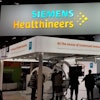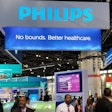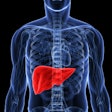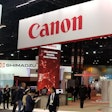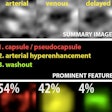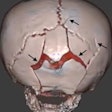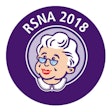
In just 80 days (that's right industry marketeers, it's time to engage postvacation panic mode), the global radiological community will descend on Chicago for the 104th RSNA Scientific Assembly and Annual Meeting. Viewed as the pinnacle for new product launches for medical imaging, the exhibition floor at RSNA also offers a glimpse of the future and a reflection of the state of radiology today.
Here's our take on the top trends we expect to see taking center stage at the show this year.
Efficiency, efficiency, efficiency
While you might have expected artificial intelligence (AI) to be first on our list (more on that below), we think efficiency will be the most impactful theme at RSNA this year. With health providers under pressure to deliver high-quality services to more people at lower cost, radiology is increasingly going to be under the microscope as an area for providers to make operational efficiency gains.
 Stephen Holloway from Signify Research.
Stephen Holloway from Signify Research.Don't expect efficiency to be emblazoned across a single product or marketing campaign, though -- this is not going to be a headline-grabbing theme. Instead, it will be subtly woven into almost all aspects of hardware and software on display, the effect of which is dependent on multiple small marginal gains. New imaging hardware released at the show this year will be that much faster than the last, technologists will have to do less manual preparation and positioning, power consumption will be improved, repeat scan rates will fall, systems will boot up faster, and service downtime will be reduced.
In software, new operational efficiency tools and modules will take center stage. Either embedded in existing platforms or as add-on practice management modules, smart worklists, case-load balancing, quality assurance (QA) support, and myriad nuanced changes are being implemented to help radiologists do more in less time, with higher-quality results.
Operational analytics will also be prominent, supporting improved visibility and measurement of radiology department performance and creating a new market focused on "operational decision support." The consolidation of healthcare providers has created demand for long-term risk-sharing contracts with large vendors. Profitability for the supplier is dependent on improvements in clinical and operational performance at the provider. By expanding into the operational and administration budget of providers, big health technology vendors see this as their next big opportunity for the growth of professional services, on top of their ongoing hardware and software supply revenue streams.
Enterprise imaging comes of age -- in 2 distinct flavors
Enterprise imaging, while not a new topic in radiology, will again play a significant role at the RSNA show this year. Initially, radiologists' concerns over the potential loss of control of their PACS and RIS to encroaching enterprise health IT systems such as electronic medical records and hospital information systems were most prominent in limiting the term "enterprise." Yet today, enterprise imaging has become a catchall for confusion and vagueness, not helped by every imaging IT software product on the market being branded as enterprise imaging.
At the RSNA show, we can separate enterprise imaging into two broad categories. The first, essentially "enterprise radiology," has come about with the consolidation of healthcare providers and radiology practices into larger radiology enterprise networks. Its genesis, often supported by enterprise vendor-neutral archive (VNA) implementation to integrate data from various proprietary PACS networks into a single repository, also provided the opportunity for integration and exchange of nonradiology unstructured clinical content (e.g., non-DICOM). That said, few implementations with an enterprise radiology focus have matured to provide access outside of core diagnostic imaging.
This area has also become more introverted with the growing availability of modules and add-ons to support operational efficiency across the network (as described above). Consequently, the bulk of enterprise radiology implementations have been tied to single-vendor offerings, with limited interoperability outside of radiology.
The second category, better described as enterprise clinical content, has focused more on access and interoperability of both structured (DICOM) and unstructured data across multiple clinical departments. While often driven by radiology, the enterprise clinical content model has used more mature clinical archive and content management software to enable broader access to imaging and associated clinical content across the broader clinical network. This has also been tied to the shift in healthcare provision to integrated care and diagnosis, such as supporting multidisciplinary tumor boards for cancer patients.
Both flavors of enterprise imaging will be prominent at RSNA 2018, though they come with a word of warning: Rarely are the two types so obviously discrete as described above. Some enterprise radiology solutions on display at RSNA 2018 will have the capability to support non-DICOM content, albeit not in native format, but will still boast of enterprise clinical content capability. Vice versa, some enterprise clinical content vendors will boast of full enterprise radiology capability, yet lack the maturity of diagnostic and workflow tools offered by specialists. Over time, both will at some point converge, but until then, enterprise imaging will remain a confusing segment to decipher.
Stuck in the middle
The consolidation of healthcare providers and the push for integrated care are two trends having a profound impact on the vendor makeup of the exhibit floor at the RSNA show, which we expect to be more evident in 2018. Above all, midsized vendors are becoming increasingly scarce and their presence at the show will be diminished. Hardware vendors with only one or two modalities will find it increasingly difficult to compete.
The consolidation of healthcare providers to larger enterprises will favor the largest vendors that can offer a full portfolio of imaging modalities, especially as procurement preferences move toward longer-term, bundled managed service deals. Moreover, with the ongoing drive to efficiency, there are now fewer differentiators between imaging hardware products, creating a more price-competitive market. Again, this favors the larger vendors that can swallow short-term price drops over long deals.
In software, we expect a widening polarity of vendor scale in radiology, between platform vendors and best-of-breed specialists. Again, the midsized vendors with smaller platforms or partial portfolios are at risk. Expectations around interoperability and simplifying supply chains are pushing most larger healthcare providers away from multivendor software implementations and toward single-platform solutions. Almost all will be marketed as "ecosystems," though few have reached maturity in interoperability or extensive third-party application partnerships to replace the current patchwork of applications used by most health providers.
At the opposite end of the scale, a raft of small best-of-breed specialists will fill floor space at RSNA 2018 left by shrinking midsize vendors. Most are there not to sell their wares but to build valuable partnerships with clinical leaders and leading platform vendors. This group will also include the most innovative technology and applications seen at the RSNA show, whether in AI, workflow tools, practice management, or advanced visualization. However, many won't make it to the show next year -- such is the challenge of market entry.
Progress and disguise
Of course, AI will be a dominant theme at the conference this year, though with a different focus than in previous shows. The fear of radiologists being replaced by AI has subsided (for now), with growing anticipation that AI can instead augment and support radiologists. Clearer categorization of AI will be more evident too.
In terms of the number of solutions, AI-based quantification and measurement tools will be best represented at RSNA 2018 and more comfortably accepted by the radiologist community attending. Those with clinical validation and real-world evidence to support their pitches will be the attention grabbers. We should also expect to see more examples of these tools being integrated into larger imaging IT software platforms. Many of these tools will also be actively promoted by vendors pushing the "marketplace" model and pay-per-use options.
Clinical decision-support tools, while less abundant, will also have a significant presence, though these should be approached more cautiously. Few solutions have so far managed to gain regulatory approval or will have been integrated with larger medical imaging platforms. Regardless, interest in these solutions will be the highest, as they point toward how augmented radiology might work in the future. Work-in-progress demonstrations will be at every corner in McCormick Place, with the heaviest focus on lung, neurology, and liver imaging. Discussion will also focus on the availability of data for algorithm development and the complex ongoing challenges surrounding data protectionism, the commercialization of deidentified patient datasets, and the broader interoperability of health data.
Consequently, computer-aided diagnosis (CADx) could well take a back seat at this year's RSNA show. Most solutions in development are some distance from making it to market, and the select few that have approval are single-application and single-function focused -- a long way off from the all-encompassing CADx solution that radiologists feared may one day replace them.
The use of AI to support radiology workflow and operational analytics will also be more obvious this year. Autotriage and associated smart worklist algorithms based at scan acquisition will be prominent with the larger modality vendors, pointing toward a growing use of computing power at the edge in radiology, assisted by the wider availability of graphics processing units (GPUs).
AI-based workflow support tools will also become more widely available, focusing on intuitive and adaptive user interfaces and the retrieval of diagnostically relevant patient information from outside of radiology. However, it is at the intersection of operational and diagnostic processes where the use of "AI" will be overzealously positioned, with basic machine learning and computational techniques that have been available for years being pushed as "AI-driven."
Our expert team of market analysts will again be traveling to Chicago for RSNA 2018, and we look forward to having the opportunity to meet with you. See you in Chicago!
Stephen Holloway is principal analyst and company director at Signify Research, a health tech, market-intelligence firm based in Cranfield, U.K. He can be reached at [email protected].
The comments and observations expressed do not necessarily reflect the opinions of AuntMinnie.com, nor should they be construed as an endorsement or admonishment of any particular vendor, analyst, industry consultant, or consulting group.

